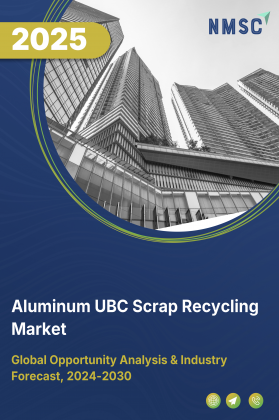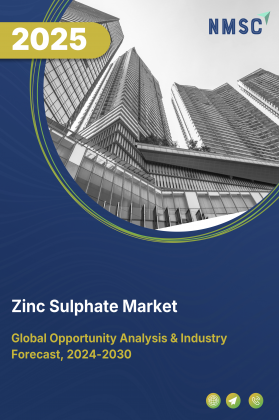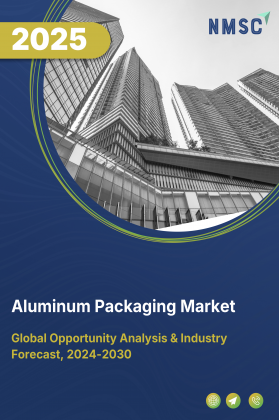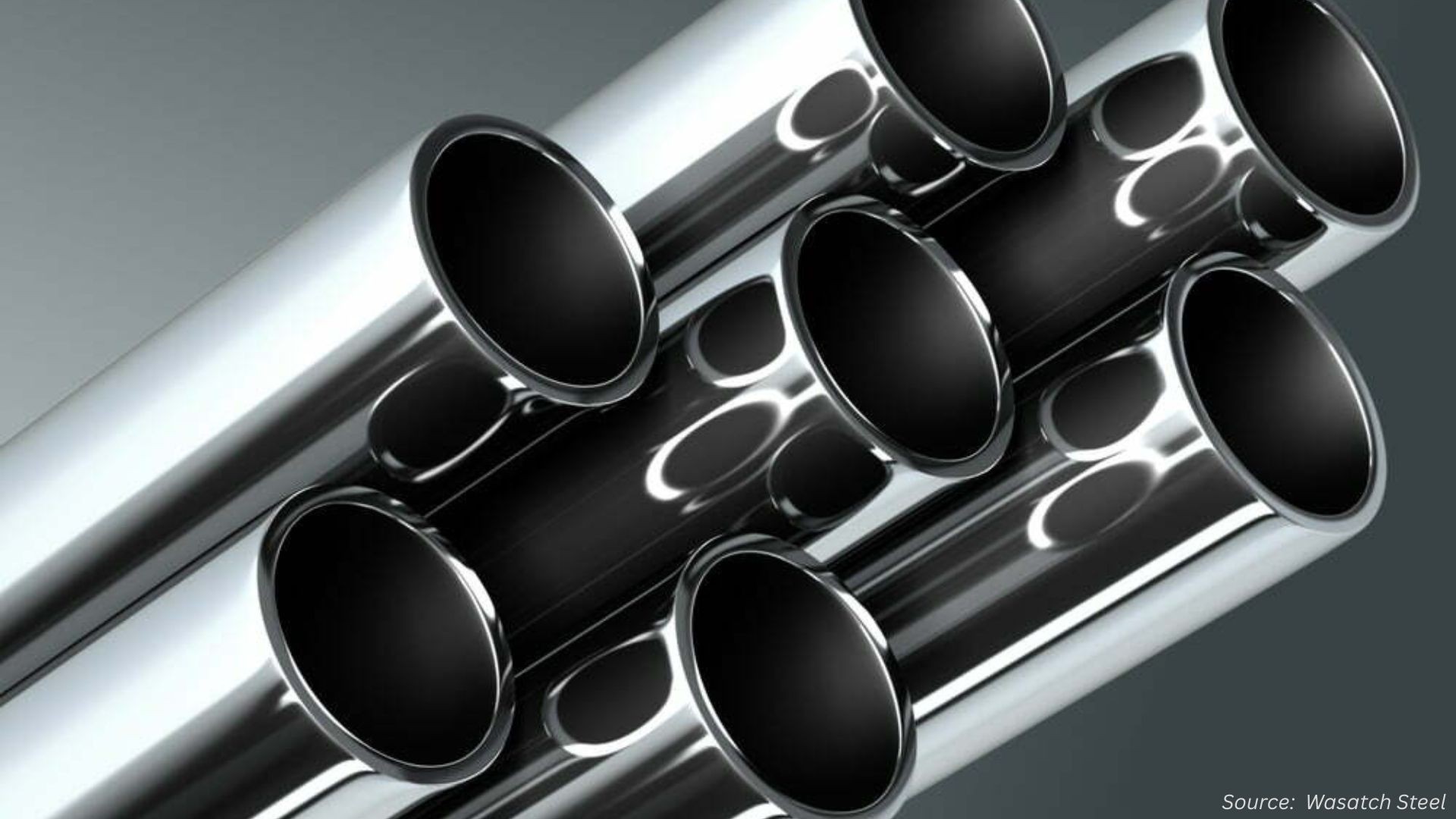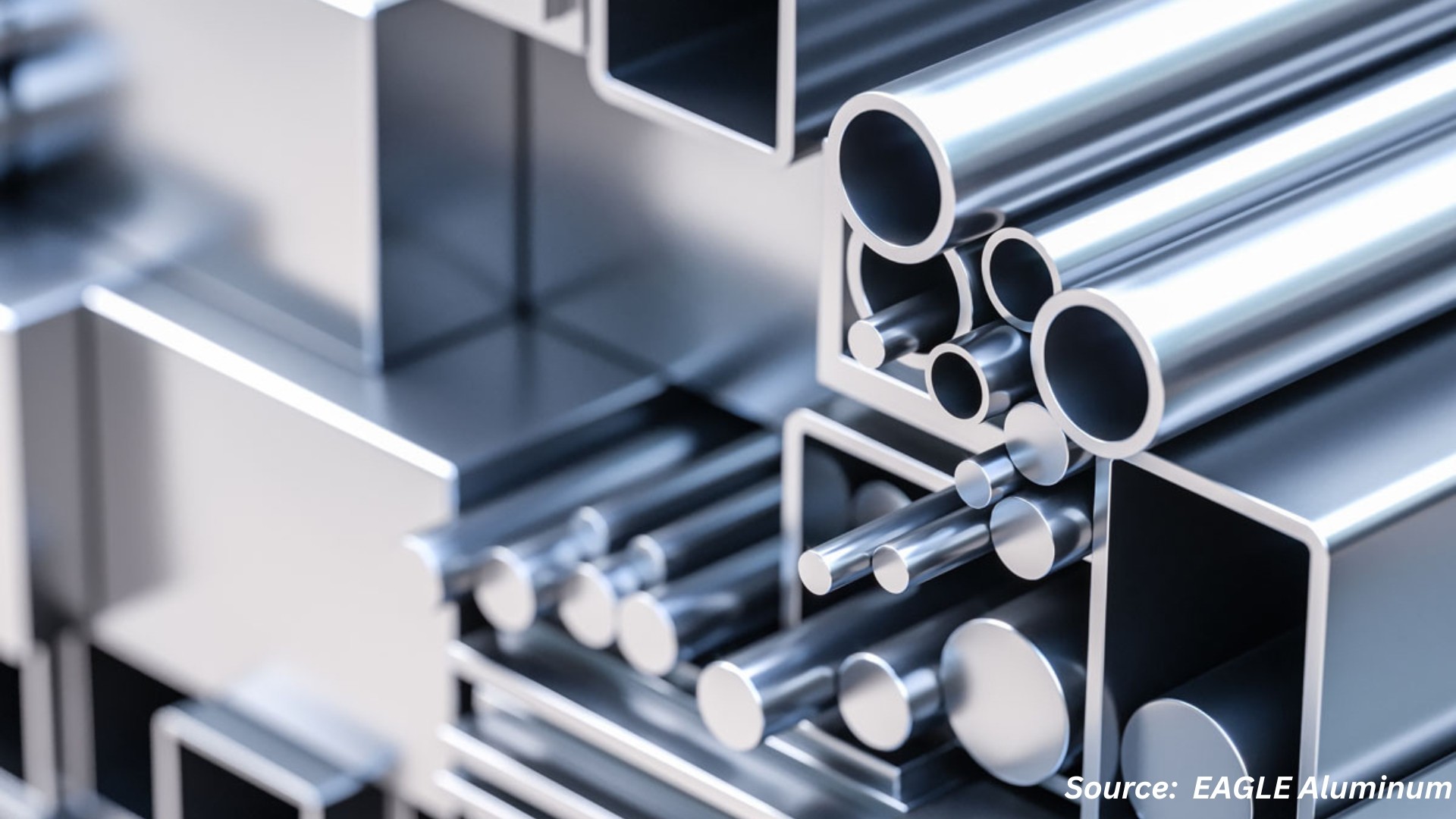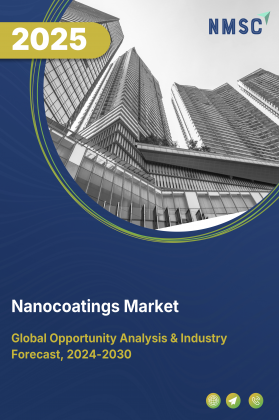
Nanocoatings Market by Material Type (Metallic, Ceramic, Polymeric, Carbon-Based, Composite), by Primary Function (Surface Protection, Surface Modification), by Formation Process (Vapor-Phase Deposition, Liquid-Phase Deposition, Solid-Phase Deposition, In-Situ Formation), by Application (Transportation, Built Environment, Electronic Systems, Medical Applications), by Industry Sector (Heavy Industries, Manufacturing, Healthcare) – Global Opportunity Analysis and Industry Forecast, 2025–2030
Industry Overview
The global Nanocoatings Market size was valued at USD 18.24 billion in 2024 and is predicted to reach USD 22.40 billion by the end of 2025. The industry is predicted to reach USD 62.69 billion by 2030 with a CAGR of 22.85% from 2025 to 2030.
The market is experiencing robust growth, driven by technological advancements, sustainability trends, and expanding industrial applications. Continuous innovations in nanotechnology have enabled the creation of coatings with superior properties such as enhanced durability, corrosion resistance, antimicrobial effects, and UV protection, meeting the evolving needs of industries like automotive, healthcare, electronics, and construction.
The rising demand for eco-friendly solutions with low VOC emissions and longer product lifespans aligns with global sustainability goals, further boosting adoption. Additionally, rapid growth in end-use sectors and emerging opportunities in renewable energy, where nanocoatings improve efficiency and protection of solar panels and wind turbines, are fueling the market expansion.
However, high production and application costs, due to specialized materials and processes, remain a challenge, particularly for cost-sensitive industries. Overall, the market shows strong potential as innovation broadens its applications and performance capabilities.
Advancements in Nanotechnology Drives the Market Growth
Continuous innovations in nanotechnology have significantly propelled the growth of the market. These advancements enable the development of coatings at the nanoscale, which exhibit superior properties such as enhanced strength, durability, corrosion resistance, and improved chemical stability compared to conventional coatings. The ability to manipulate materials at the molecular or atomic level allows manufacturers to create coatings with tailored functionalities, like self-cleaning surfaces, antimicrobial effects, and UV protection, that meet the evolving demands of various industries.
As research progresses, these cutting-edge nanocoatings become more efficient, cost-effective, and versatile, encouraging widespread adoption across automotive, healthcare, electronics, and construction sectors. Thus, breakthroughs in nanotechnology serve as a critical driver by expanding the application possibilities and performance capabilities of nanocoatings.
Demand for Sustainable and Eco-Friendly Solutions Fuel the Market Expansion
Growing global awareness about environmental conservation and the shift towards greener technologies are driving the demand for sustainable nanocoating solutions. Industries and consumers increasingly prefer coatings that are low in volatile organic compounds (VOCs), energy-efficient in application, and compliant with stringent environmental regulations.
Nanocoatings offer eco-friendly benefits such as longer product life, reduced material wastage, and enhanced performance without relying on hazardous chemicals. This aligns with corporate sustainability goals and government policies promoting cleaner production methods, making eco-friendly nanocoatings an attractive choice across sectors like automotive, construction, electronics, and healthcare.
Growth in End-Use Industries Boost the Market Demand
The rapid expansion of key end-use industries is a major driver of the nanocoatings market demand. In the automotive sector, nanocoatings enhance scratch resistance, UV protection, and self-cleaning capabilities, improving both the lifespan and appearance of vehicle components.
In healthcare, these coatings are applied to medical devices and high-touch surfaces to inhibit microbial growth, lowering infection risks in clinical environments. The electronics industry benefits from nanocoatings that shield devices against moisture, dust, and scratches, thereby boosting durability and performance.
In construction, nanocoatings protect materials from UV radiation, moisture, and environmental wear, extending the structural integrity and service life of buildings. This broad applicability across multiple high-growth industries significantly fuels market demand.
High Production and Application Cost Limits the Market Growth
The high cost of producing and applying nanocoatings remains a significant restraint on the nanocoatings market growth. Manufacturing these advanced coatings requires specialized raw materials, precision equipment, and sophisticated fabrication processes, which is expensive and resource-intensive.
Additionally, application demands skilled labor and controlled environments to ensure performance quality. These factors increase overall costs, making nanocoatings less accessible for cost-sensitive industries or small-scale users, and potentially slowing adoption despite their superior benefits.
Rising Demand in Renewable Energy Applications Unlock New Growth Opportunities
The growing global shift towards renewable energy presents a significant opportunity for the market. Nanocoatings is applied to solar panels to enhance light absorption, improve self-cleaning properties, and protect against environmental degradation, thereby increasing energy conversion efficiency and lifespan.
In wind energy, they reduce wear and corrosion on turbine blades and components. As governments and industries invest heavily in clean energy infrastructure, the need for high-performance protective solutions positions nanocoatings as a critical enabler of efficiency and durability in renewable energy systems.
Market Segmentations and Scope of the Study
The nanocoatings market report is segmented by material type, primary function, formation process, application, industry sector, and regions. Material types include metallic, ceramic, polymeric, carbon-based, and composite nanocoatings. Primary functions cover surface protection, surface modification, optical enhancement, biological interaction, and energy management. Formation processes comprise vapor-phase deposition, liquid-phase deposition, solid-phase deposition, and in-situ formation. Applications span transportation, built environment, electronic systems, medical applications, and consumer products. Industry sectors include heavy industries, manufacturing, healthcare, and energy & environment. Geographically, the market is analysed across North America, Europe, Asia-Pacific, and the Rest of the World, highlighting strong demand across diverse industries and regions.
Geographical Analysis
In North America, the presence of a robust research and development ecosystem is a key driver of the nanocoatings market share. The region hosts numerous universities, research institutions, and industry leaders that actively invest in developing advanced nanocoating technologies with enhanced durability, antimicrobial properties, and environmental sustainability.
Supportive government funding programs and collaborative industry–academia partnerships accelerate innovation and commercialization. This strong technological base enables the rapid introduction of high-performance nanocoatings across sectors such as automotive, aerospace, healthcare, and electronics, fueling market growth in the region.
In Europe, strict environmental regulations and ambitious sustainability targets are a major driver for the adoption of nanocoatings. The European Union’s directives on reducing volatile organic compounds (VOCs) and promoting eco-friendly materials push industries to seek advanced coating solutions with minimal environmental impact.
Nanocoatings, which offer durability, corrosion resistance, and self-cleaning properties without relying on harmful chemicals, align well with these requirements. Additionally, strong public and corporate commitment to sustainable manufacturing practices accelerates their integration into automotive, construction, healthcare, and consumer goods sectors across the region.
The Asia-Pacific region’s accelerating industrial expansion and robust infrastructure growth are major factors driving the market. Expanding automotive manufacturing hubs, booming electronics production, and massive construction projects in countries like China, India, Japan, and South Korea are fuelling demand for high-performance protective coatings.
Nanocoatings provide enhanced durability, corrosion resistance, and environmental protection, making them ideal for the region’s fast-growing industries. Additionally, rising consumer awareness of product quality and longevity, along with increasing government investments in advanced manufacturing technologies, further boost market adoption.
In regions outside the major markets, such as Latin America, the Middle East, and Africa, growing adoption of nanocoatings in niche and emerging industries is driving market growth. Applications in sectors like oil and gas, marine, mining, and energy infrastructure are expanding as these industries seek advanced solutions for corrosion protection, extreme weather resistance, and performance enhancement. Additionally, increasing awareness of nanotechnology’s benefits, coupled with gradual industrial modernization and foreign investment in manufacturing and infrastructure, is encouraging the use of nanocoatings across diverse applications.
Strategic Innovations Adopted by Key Players
Key players in the nanocoatings industry are actively advancing product innovation, forging high-profile collaborations, and targeting specialized applications to strengthen their competitive position and address diverse industry needs.
-
In April 2025, P2i unveiled ultra-thin, durable conformal nano-coatings designed for gaming electronics. These coatings offer molecular-level protection, are reworkable, and improve manufacturing efficiency by eliminating masking and demasking. A top Chinese gaming-headset component manufacturer has already adopted P2i’s technology.
-
In October 2024, HZO announced a collaboration with NASA and the University of Colorado, resulting in a paper published in Applied Optics on using Parylene-C nano coatings to enhance far-infrared filters for space instruments. The coatings demonstrated 80–90% transmission at cryogenic temperatures (~5 K), highlighting their potential in harsh, extreme environments.
-
In October 2024, Tesla NanoCoatings promoted its TESLAN® system, a two-coat carbon nanocoating using CNT-filled epoxy that provides improved corrosion protection and extended longevity. A notable feature is Wet-Edge™ technology, allowing the topcoat application 30–45 minutes after primer, resulting in up to 50% reduction in maintenance costs.
Key Benefits
-
The report provides quantitative analysis and estimations of the market from 2025 to 2030, which assists in identifying the prevailing industry opportunities.
-
The study comprises a deep-dive analysis of the current and future nanocoatings market trends to depict prevalent investment pockets in the sector.
-
Information related to key drivers, restraints, and opportunities and their impact on the market is provided in the report.
-
Competitive analysis of the key players, along with their market share is provided in the report.
-
SWOT analysis and Porters Five Forces model is elaborated in the study.
-
Value chain analysis in the market study provides a clear picture of roles of stakeholders.
Nanocoatings Market Key Segments
By Material Type
-
Metallic Nanocoatings
-
Pure Metal Coatings
-
Metal Alloy Coatings
-
Metal Oxide Coatings
-
-
Ceramic Nanocoatings
-
Oxide Ceramics
-
Non-Oxide Ceramics
-
Glass Ceramics
-
-
Polymeric Nanocoatings
-
Natural Polymer-Based
-
Synthetic Polymer-Based
-
Biodegradable Polymer-Based
-
-
Carbon-Based Nanocoatings
-
Graphene-Based
-
Fullerene-Based
-
Nanodiamond-Based
-
-
Composite Nanocoatings
-
Metal-Matrix
-
Ceramic-Matrix
-
Polymer-Matrix
-
By Primary Function
-
Surface Protection
-
Corrosion Prevention
-
Wear Resistance
-
Chemical Resistance
-
-
Surface Modification
-
Hydrophobic/Hydrophilic
-
Oleophobic/Oleophilic
-
Friction Modification
-
-
Optical Enhancement
-
Anti-Reflective
-
Light Absorption
-
Color Changing
-
-
Biological Interaction
-
Antimicrobial
-
Biocompatible
-
Bioactive
-
-
Energy Management
-
Thermal Regulation
-
Electrical Conduction
-
Energy Storage
-
By Formation Process
-
Vapor-Phase Deposition
-
Physical Vapor Methods
-
Chemical Vapor Methods
-
Plasma-Enhanced Methods
-
-
Liquid-Phase Deposition
-
Dip Coating
-
Spray Coating
-
Spin Coating
-
-
Solid-Phase Deposition
-
Thermal Spray
-
Cold Spray
-
Electrospray
-
-
In-Situ Formation
-
Chemical Conversion
-
Electrochemical Growth
-
Self-Assembly
-
By Application
-
Transportation Applications
-
Vehicle Exteriors
-
Vehicle Interiors
-
Powertrain Components
-
-
Built Environment
-
Architectural Surfaces
-
Infrastructure Elements
-
Interior Finishes
-
-
Electronic Systems
-
Semiconductor Devices
-
Display Technologies
-
Circuit Components
-
-
Medical Applications
-
Implantable Devices
-
Surgical Instruments
-
Diagnostic Equipment
-
-
Consumer Products
-
Personal Electronics
-
Household Goods
-
Apparel/Textiles
-
By Industry Sector
-
Heavy Industries
-
Oil & Gas
-
Power Generation
-
Heavy Machinery
-
Marine & Shipbuilding
-
Mining
-
-
Manufacturing
-
Automotive
-
Aerospace
-
Industrial Equipment
-
Electronics & Semiconductors
-
Textiles & Fabrics
-
Construction Materials & Building Products
-
Others
-
-
Healthcare
-
Medical Devices
-
Pharmaceutical
-
Biotechnology
-
Hospital Infrastructure & Surfaces
-
-
Energy & Environment
-
Renewable Energy
-
Energy Storage & Batteries
-
-
Others
By Region
-
North America
-
The U.S.
-
Canada
-
Mexico
-
-
Europe
-
The UK
-
Germany
-
France
-
Italy
-
Spain
-
Denmark
-
Netherlands
-
Finland
-
Sweden
-
Norway
-
Russia
-
Rest of Europe
-
-
Asia-Pacific
-
China
-
Japan
-
India
-
South Korea
-
Australia
-
Indonesia
-
Singapore
-
Taiwan
-
Thailand
-
Rest of Asia-Pacific
-
-
RoW
-
Latin America
-
Middle East
-
Africa
-
Key Players
-
Tesla NanoCoatings, Inc.
-
Aalberts surface technology
-
Aculon
-
Nanoquinn
-
Nanocare
-
NanoSlic Smart Coatings
-
Nasiol
-
CeNano GmbH & Co. KG. (Nanotol)
-
GoNano
-
Nfinite Nanotechnology Inc.
-
mirrorINOX.
-
Harind Chemicals & Pharmaceuticals Pvt. Ltd
-
Nilima Nanotechnologies
Report Scope and Segmentation
|
Parameters |
Details |
|
Market Size in 2025 |
USD 22.40 Billion |
|
Revenue Forecast in 2030 |
USD 62.69 Billion |
|
Growth Rate |
CAGR of 22.85% from 2025 to 2030 |
|
Analysis Period |
2024–2030 |
|
Base Year Considered |
2024 |
|
Forecast Period |
2025–2030 |
|
Market Size Estimation |
Billion (USD) |
|
Growth Factors |
|
|
Countries Covered |
28 |
|
Companies Profiled |
15 |
|
Market Share |
Available for 10 companies |
|
Customization Scope |
Free customization (equivalent up to 80 working hours of analysts) after purchase. Addition or alteration to country, regional, and segment scope. |
|
Pricing and Purchase Options |
Avail customized purchase options to meet your exact research needs. |

















 Speak to Our Analyst
Speak to Our Analyst



